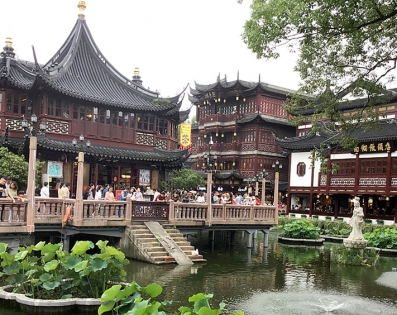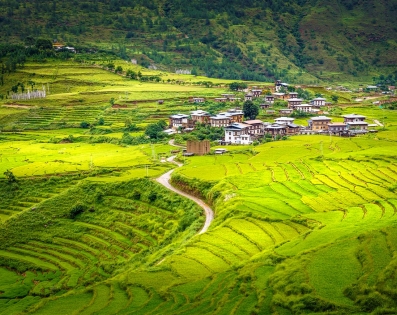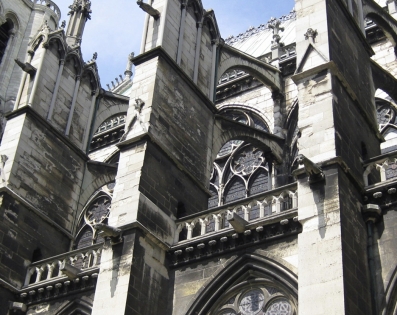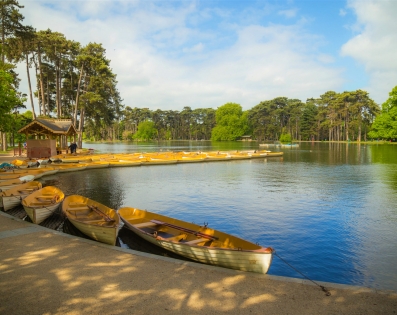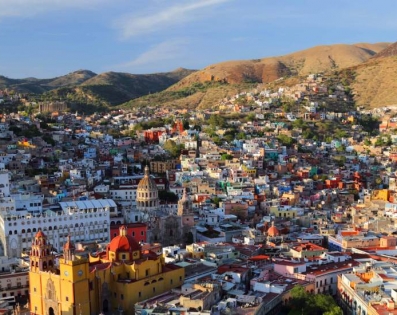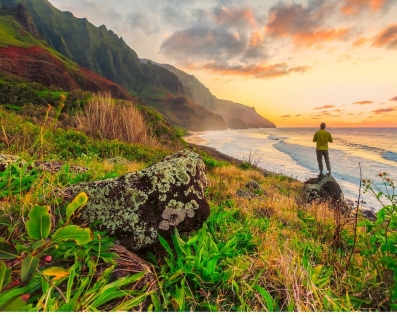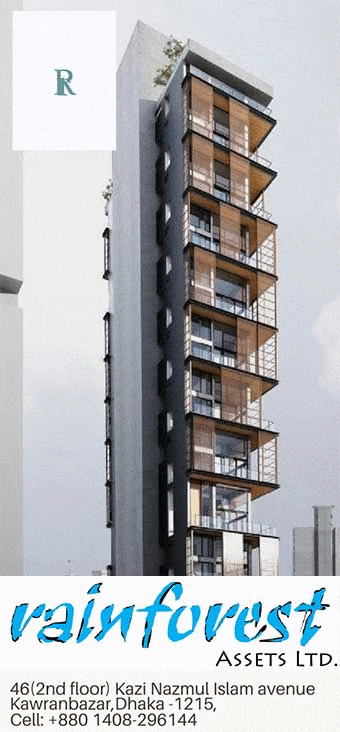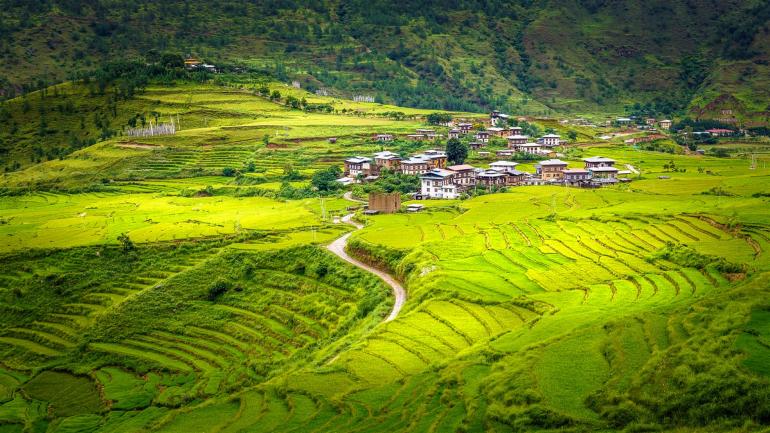
They are the best of the best. They are destinations overlooked by most travellers or familiar hotspots offering new reasons to return. Best in Travel for 2020.
We ask everyone, from our writers and editors to our online family of social media influencers, and amid fierce debate, the list is whittled down by our panel of travel experts to just 10 countries, 10 regions, 10 cities and 10 best value destinations. Each is chosen for its topicality, unique experiences and ‘wow’ factor. We also take sustainable travel seriously – helping you to have a positive impact wherever you choose to go. This year’s list includes everything from Bhutan’s enchanting monasteries to the coastal hikes and seafood shacks of Maine.
So what are you waiting for? Let’s explore.Welcome to Bhutan
Bhutan is no ordinary place. It is the last great Himalayan kingdom, shrouded in mystery and magic, where a traditional Buddhist culture carefully embraces global developments.
Low Volume, High Value Tourism
The Bhutanese pride themselves on a sustainable approach to tourism in line with the philosophy of Gross National Happiness. Foreign visitors famously pay a minimum tariff of US$250 per day, making it seem one of the world’s more expensive destinations. However, this fee is all-inclusive – accommodation, food, transport and an official guide are all provided, so it’s not a bad deal. You don’t have to travel in a large group and you can arrange your own itinerary. What you won’t find is budget independent travel.
Surprising Bhutan
Bhutan is like nowhere else. This is a country where the rice is red and where chillies aren’t just a seasoning but the main ingredient. It’s also a deeply Buddhist land, where monks check their smartphones after performing a divination, and where giant protective penises are painted at the entrance to many houses. Yet while it proudly prioritises its Buddhist traditions, Bhutan is not a land frozen in time. You will find the Bhutanese well educated, fun loving and very well informed about the world around them. It’s this blending of the ancient and modern that makes Bhutan endlessly fascinating.
The Last Shangri-La?
So why spend your hard-earned money to come here? Firstly, there is the pristine eastern Himalayan landscape, where snow-capped peaks rise above primeval forests and beautiful traditional villages. To this picture-book landscape add majestic fortress-like dzongs and monasteries, many of which act as a stage for spectacular tsechus (dance festivals) attended by an almost medieval-looking audience. Then there are the textiles and handicrafts, outrageous archery competitions, high-altitude trekking trails, and stunning flora and fauna. If it’s not ‘Shangri-La’, it’s as close as it gets.
An Environmental Model
Environmental protection goes hand in hand with cultural preservation in Bhutan. By law, at least 60% of the country must remain forested for all future generations; it currently stands above 70%. Not only is Bhutan carbon neutral, but it actually absorbs more carbon than it emits! For the visitor, this translates into lovely forest hikes and superb birding across a chain of national parks. Whether you are spotting takins or blue poppies, trekking beneath 7000m peaks or strolling across hillsides ablaze with spring rhododendron blooms, Bhutan offers one of the last pristine pockets in the entire Himalaya.
Taktshang Goemba
Bhutan’s most famous monastery, Taktshang Goemba is one of its most venerated religious sites. Legend says that Guru Rinpoche flew to this site on the back of a tigress to subdue a local demon; afterwards he meditated here for three months. This beautiful temple clings to the sheer cliffs soaring above a whispering pine forest. The steep walk to the monastery is well worthwhile, providing the most photogenic views of the monastery and the Paro valley, and you can combine a visit with the Bumdrak trek.
Terrific Tsechus
Most of Bhutan’s dzongs and goembas (monasteries) have annual festivals featuring sacred dance dramas. The largest of these festivals is the tsechu – with dances in honour of Guru Rinpoche. The dances are performed by monks and laypeople dressed in colourful costumes and painted masks, and the dancers take on aspects of wrathful and compassionate deities, heroes, demons and animals. During the dances, atsara (masked clowns) mimic the dancers and perform comic routines, and even harass the audience for money in exchange for a blessing with the wooden phallus they carry!
Himalayan Treks
Bhutan’s treks are physically demanding but hugely rewarding. They are the only way to get close to Bhutan’s high mountains and to visit such fabled valleys as Laya and Lingzhi. The Jhomolhari trek and Snowman trek in particular rank as two of the world’s classic walks. On all treks you will be expertly guided and looked after and your pack will be carried by ponies. Meeting traditionally dressed locals tending their animals according to century-old traditions will be a highlight of your trip.
Archery
Bhutan’s national sport of archery (datse) is exhilarating and entertaining to watch, with competitions held across the country throughout the year. There are two classes of competition: one for the traditional bamboo bows, and another for the space-age carbon-fibre bows that propel arrows at astonishing speeds. The targets seem impossibly tiny and the distance immense, yet the target is hit quite regularly. Narrow misses, bawdy banter and singing and dancing accompany the whoosh of arrows and hoots of delight as the competition heats up. Look for weekend practice sessions at Paro’s Archery Ground.
Haa Valley
Just a few hours’ drive from Paro, over Bhutan’s highest motorable road, this little-visited valley is home to magical cliffside hermitages, ancient temples and charming villages. Accommodation is focused around boutique farmhouses and homestays rather than big group resorts, giving it a more intimate feel. The valley rim is a great place to do some hiking or trekking, either along the Cheli La ridge or up to the Saga La, with its fine views of snow-capped Jhomolhari. Budget a couple of days to beat the crowds.
Punakha Dzong
Superbly situated where two rivers converge, Punakha Dzong is the most dramatic and beautiful example of Bhutanese architecture in the country. Visit in spring to see the famous jacaranda trees splash lilac flowers down the whitewashed walls and red-robed monks wandering on a sea of purple petals. The fortress-thick walls are intimidating and are silent one moment, then warmed with the echoes of giggles in another as a horde of young monks head off for a meal. The dzong’s spring festivals rank as the country’s most colourful.
Traditional Textiles
Hand-woven and embroidered textiles are generally recognised as Bhutan’s premier handicraft. Centuries of tradition have honed the techniques of textile dyeing, weaving and stitching. Most of the weavers are women and it is a rare home in Bhutan that does not ‘clunk’ to the sound of a loom. In addition to the National Textile Museum in Thimphu, there are small shops throughout the country – particularly in Bumthang and in the far east – selling vibrant fabrics that make beautiful souvenirs.
Gross National Happiness
Gross National Happiness has become Bhutan’s philosophical tagline and an offering to a world grappling with unsustainable ‘growth economics’. Based on core Buddhist values, this measurable index is a counterpoint to the economist’s Gross National Product. It is also a revolutionary philosophy that places real value on things such as cultural heritage, health, education, good governance, ecological diversity and individual well-being. Importantly, it sees economic growth not as an end but rather as a means of achieving quality of life and it’s fascinating to see the philosophy in action.
Bumthang
The valleys comprising Bumthang make up the cultural heartland of Bhutan. The region’s ancient goembas, dzongs and temples figured prominently in Bhutan’s early development as well as in the foundation of the unique aspects of Bhutanese Buddhism. Witness the rock imprint of Guru Rinpoche, hoist Pema Lingpa’s 25kg chain mail, and stare into the churning waters of Membartsho, where Pema Lingpa uncovered hidden Buddhist treasures. Bumthang is also one of the best places for day hikes up to some superbly sited monasteries and meditation retreats.
Paro Dzong & National Museum
Paro’s Rinpung Dzong is a hulking example of the defining fortress-like dzong architecture that dots Bhutan’s major settlements and valleys. The colourful Paro tsechu is held here in spring; the festival culminates with the unfurling of a thondrol (huge religious image) depicting the tantric saint Guru Rinpoche. Above the dzong is an old, round watchtower, the Ta Dzong, now converted into the excellent National Museum, which has an informative and eclectic collection. It’s the perfect introduction to Bhutan’s cultural heritage.
Arts & Crafts
Bhutan’s pride in its handicrafts is on show at the schools of Zorig Chusum and Bhutan’s many handicraft shops. Many items have a utilitarian or religious use, such as bamboo baskets, brass butter lamps or the exquisite wooden bowls hand-turned from intricately patterned burlwood. Silk, cotton, wool and even yak hair is spun, dyed, woven and stitched into cloth and traditional garments. Bhutan’s rich painting tradition lives on in the form of intricate thangkas (religious pictures), while Bhutanese stamps are must-haves for collectors.
Trongsa Dzong & the Tower of Trongsa Museum
Sprawling down a ridge towards an ominous gorge, Trongsa Dzong sits in a central position in Bhutan’s geography and in its recent history. Both the first and second kings ruled the country from this strategic position. Inside is a labyrinth of stairways, narrow corridors and courtyards. Overlooking the dzong, the Tower of Trongsa Royal Heritage Museum is housed in the two-winged watchtower. This excellent museum is dedicated to the history of the royal Wangchuck dynasty and has exhibits ranging from personal effects of the royals to Buddhist statues.
Thimphu Weekend Market
Thimphu’s bustling weekend Weekend Market is the biggest and brightest in the country. The food section is an olfactory overload with dried fish competing with soft cheese, betel nut and dried chilli to assault your nostrils. Curly fern fronds (nakey), red rice and ground herbal incense are just some of the exotic offerings. Cross the fast-flowing Wang Chhu on the traditional cantilever footbridge to get to the handicraft and textile stalls where you can barter for ‘antiques’, rolls of prayer flags or even a human thigh-bone trumpet.
Wonderful Wildlife
Bhutan has the largest proportion of land designated as protected areas in the world, with 65% of its territory covered in forest and mountains, protecting richly varied habitats and an amazing diversity of plants and creatures, including snow leopards and Bengal tigers. Birdwatchers flock to the monsoon-soaked evergreen forests of southern Bhutan, where hundreds of species can be spotted from the road. The endangered black-necked crane winters in central and eastern Bhutan and the reliably returning cranes of the Phobjikha valley are justifiably renowned.
Kyichu Lhakhang
Kyichu Lhakhang is one of Bhutan’s oldest, most venerated and most beautiful temples and it sits just a short distance from the gateway town of Paro. The oldest temple in this twin-temple complex is believed to have been built in AD 659 by King Songtsen Gampo of Tibet. The outside grounds hum with prayers and spinning prayer wheels, while inside a treasured 7th-century statue of Jowo Sakyamuni sits in the inner sanctuary. Easy day walks begin in the vicinity of this serene lhakhang.
Thimphu Valley
Thimphu abounds with museums and cultural attractions, including the Trashi Chho Dzong, which celebrates one of the country’s most popular tsechus in autumn. The capital also boasts the country’s only real dining and nightlife scene. There are several great hikes around the valley walls, taking in a handful of perfectly positioned monasteries offering excellent views over the city and valley. And just west of Thimphu’s centre, Motithang Takin Preserve is your best bet for spotting Bhutan’s extraordinary national animal.
Forests & Blooms
Although the ethereal high-altitude blue poppy is the national flower and the cypress the national tree, no plant is more emblematic of Bhutan than the rhododendron. In spring, splashes of red, pink and white rival the multicoloured prayer flags at many high passes, but especially around the Dochu La en route to Punakha. With some of the Himalaya’s most pristine forests, Bhutan beckons amateur botanists with its sheer variety of flora and shades of green. Long drives are inevitable, so remember to stop the car and smell the flowers.


